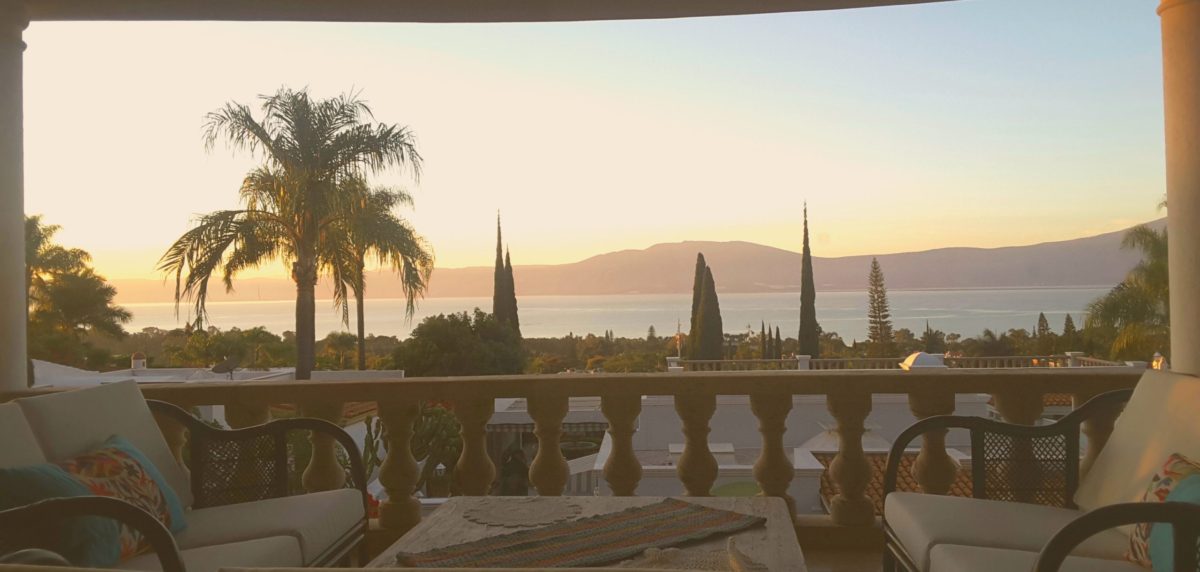Change is haunting our little corner of paradise. As long as there have been gringos moving to lakeside to get away from it all, each new wave has had two things in common: first, the old-timers predict the end of all that is good and wholesome here, and second, the newbies want to shut the door behind them and let no one else in.
As The Eagles once sang, “you call some place Paradise, kiss it goodbye.”
When you have a great, inexpensive place to live, with a wonderful climate and friendly people, near a major metropolitan area and an international airport, people will find you (Cue Hans Gruber). With the improving economies NOB, all those baby-boomers (10,000 a day) looking to retire, and Guadalajara continuing to grow in all directions, another growth wave is washing over lakeside.
I don’t get overly excited about it. Yes, there is a shadowy group of international investors looking to build some high rises up against the mountains. And a major consortium of Mexican companies wants to build a US-style retirement community on the underdeveloped east side of Chapala. New properties are up for sale and in development all over the area, and even my own condominio has started clearing lots in the second, larger portion of our development.

The infrastructure, especially the road network, is insufficient for even the existing population. And the local government–regardless of who is in charge–seems more interested in making some money from approving new development than in improving the infrastructure necessary to support it.
I still feel most of the opposition to development is a little reflexive. Most of these proposed projects don’t get built. Developers in Mexico have a tendency to promote first, in the hopes of generating enough interest to rezone/build/sell. So one often hears about a project, sees advertising and maybe even a ground-breaking, yet nothing comes of it.


On the flip side, we have two new hospitals and a cardiac clinic underway, which is a vest improvement on the simple clinic and Cruz Roja ambulance upon which we previously relied. I agree that no one wants to turn our sleepy little town into another Puerto Vallarta, yet that is unlikely. While our weather is near perfect, the lake does not provide the same tourist draw as the ocean. There is a sizable mountain between us and Guadalajara, so we won’t be overrun by commuters until (1) the main road is greatly improved and (2) there is nowhere else closer to the city to develop. That gives us about 20 years of peace on that front.

Which is not to say there is no threat from development. We have a high-rise sneaking up on the lake shore in an otherwise quiet residential neighborhood, despite the zoning laws and the opposition of the residents. Scars appear on the mountainside from time-to-time. but the good comes with the bad.

New continuing care community… 
think they’re marketing to gringos?
As more people arrive, especially more Mexicans and even more specifically Tapatios from Guadalajara, demand for infrastructure will grow, too. Its one thing to ignore a pueblo of 10,000 locals, or even a few thousand gringo retirees and snowbirds. But when folks with political connections start to retire to lakeside, things will change. As they always do.
Change is the only constant, as they say. Fifty years ago, Ajijic was a little Mexican pueblo connected by a dirt road to the wider world. Thirty years ago, expats lined up at the only phone in the public square to make long-distance calls home. Today, it’s still a quaint village, albeit with a WalMart and more traffic and good restaurants than it would have otherwise. It probably won’t be that forever, but nowhere is.








































































